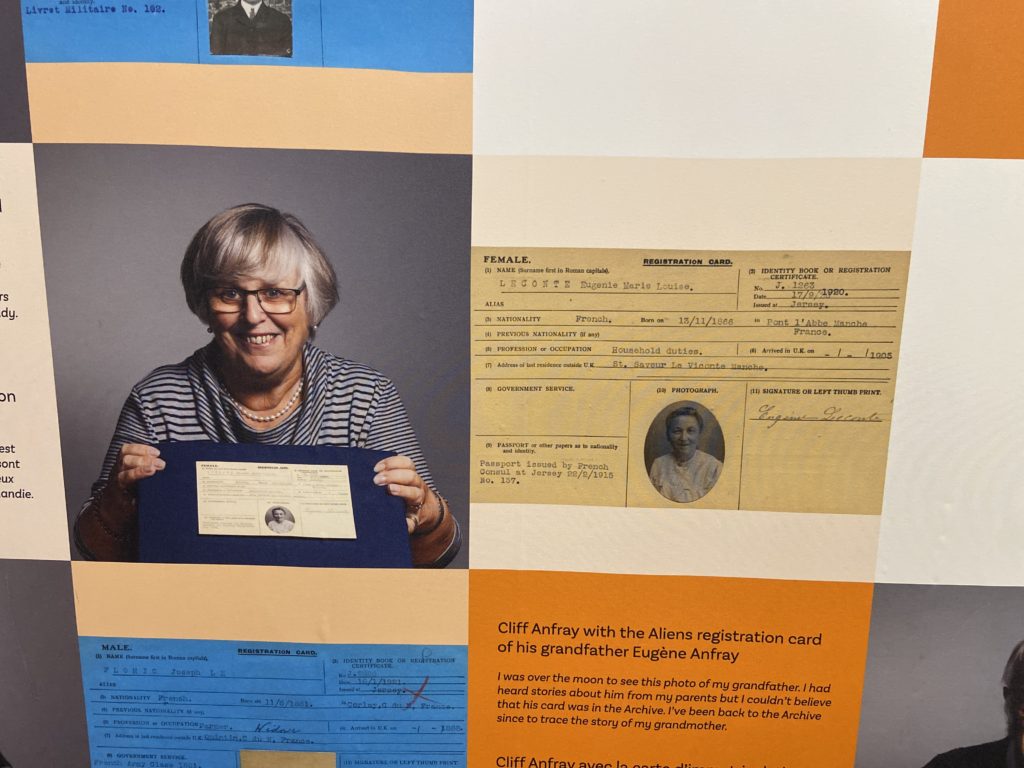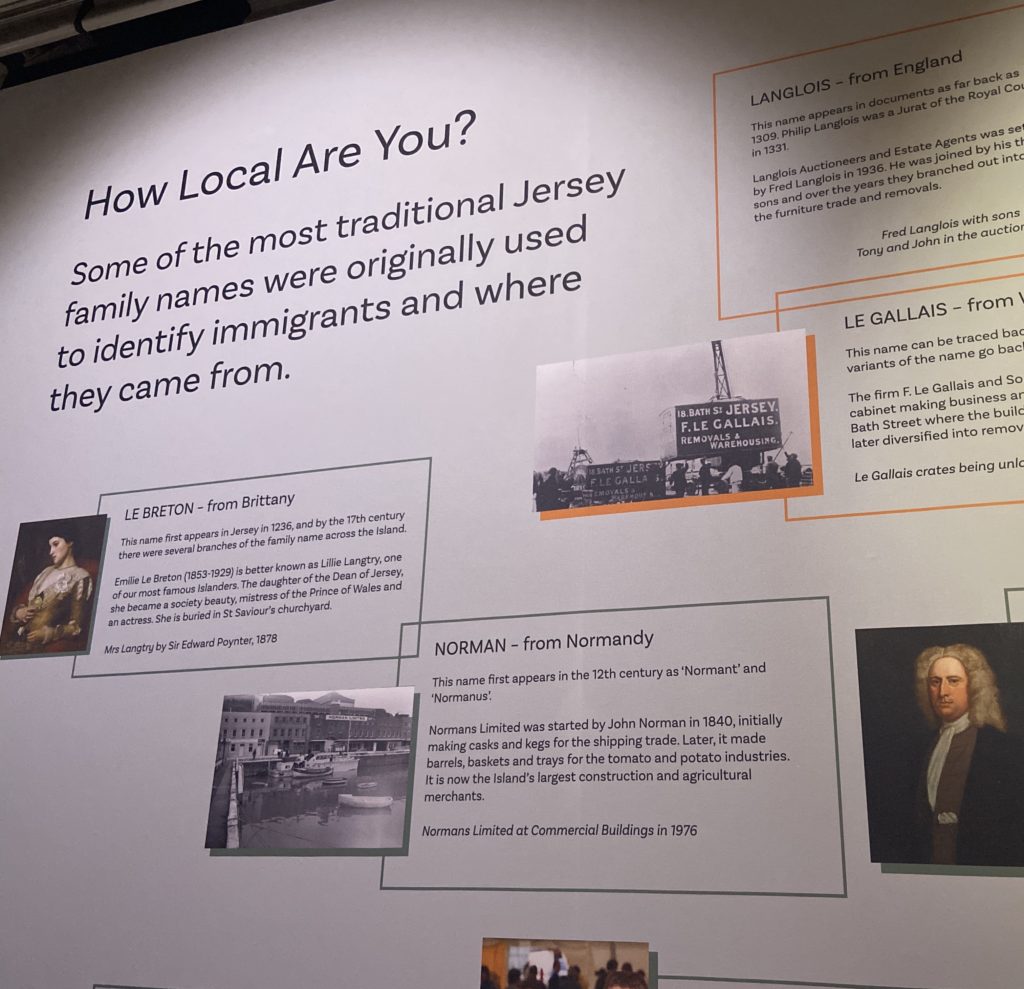The ‘People Make Jersey’ exhibition showcased within Jersey Museum, allowed us as students to explore the rich history Jersey contains as well as its vast number of occupants that have helped shape that history. This exhibition displayed just how much variety Jersey has in terms of culture, describing the Island as a mixing pot of people who have come from countries all over the world, or even people who’s families have been here for centuries. From visiting this exhibition I have learnt of the many different stories of migration that played a crucial part in creating Jersey’s cultural identity, varying from religious and political refugees to economic migrants.
One section of the ‘People make Jersey’ exhibition focused on the many ‘Alien’ registration cards, which were introduced in 1920 and issued to migrants who had relocated to Jersey. These cards displayed various pieces of information such as the profession, previous residence and nationality of the person, alongside an image of them. This therefore gives us a visual representation of the many different backgrounds and stories Jersey holds in small fragments. In addition, this also allowed for the public of Jersey to be given an opportunity to view images and information of distant family members, that established their roots on the island, for the first time, providing them a link to their diverse family histories.
Another section of the exhibition on the other hand, looked at family names that are often associated with being typical ‘Jersey’ names which contain a long line of family history on the island. Originally, these typical ‘Jersey’ names were in fact used to identify where certain immigrants were from, with names such as Le Breton, De Gruchy, Norman and more originating from various areas in France, and names such as Hamptonne, Le Gallais and Langlois originating across Great Britain. Even hundreds of years later after first arriving in Jersey, these predominant names can still be seen and recognised as an important part of the island, with establishments like Normans and De Gruchy, located in town, still running to this day.
However, when reflecting on the statement ‘Every Jersey resident has an immigration story – whether their family came here 500 years or five years ago. This exhibition explores some of these stories and the ways in which immigration has shaped and influenced the Island we know today.’ displayed within the exhibition, I found that the section that explained the English influence to Jersey life, to be personally the most interesting aspect. This is as although I was born on the island, the rest of my family originated mainly from Manchester and had no previous links with the island. I was even more so fascinated with the small piece of the exhibition that explained the introduction of the English education to the island, made first available to the boys at Victoria College, due to the fact that my mother first moved to the island to continue her career as a teacher, as a result of Jersey being in a shortage of the profession.









